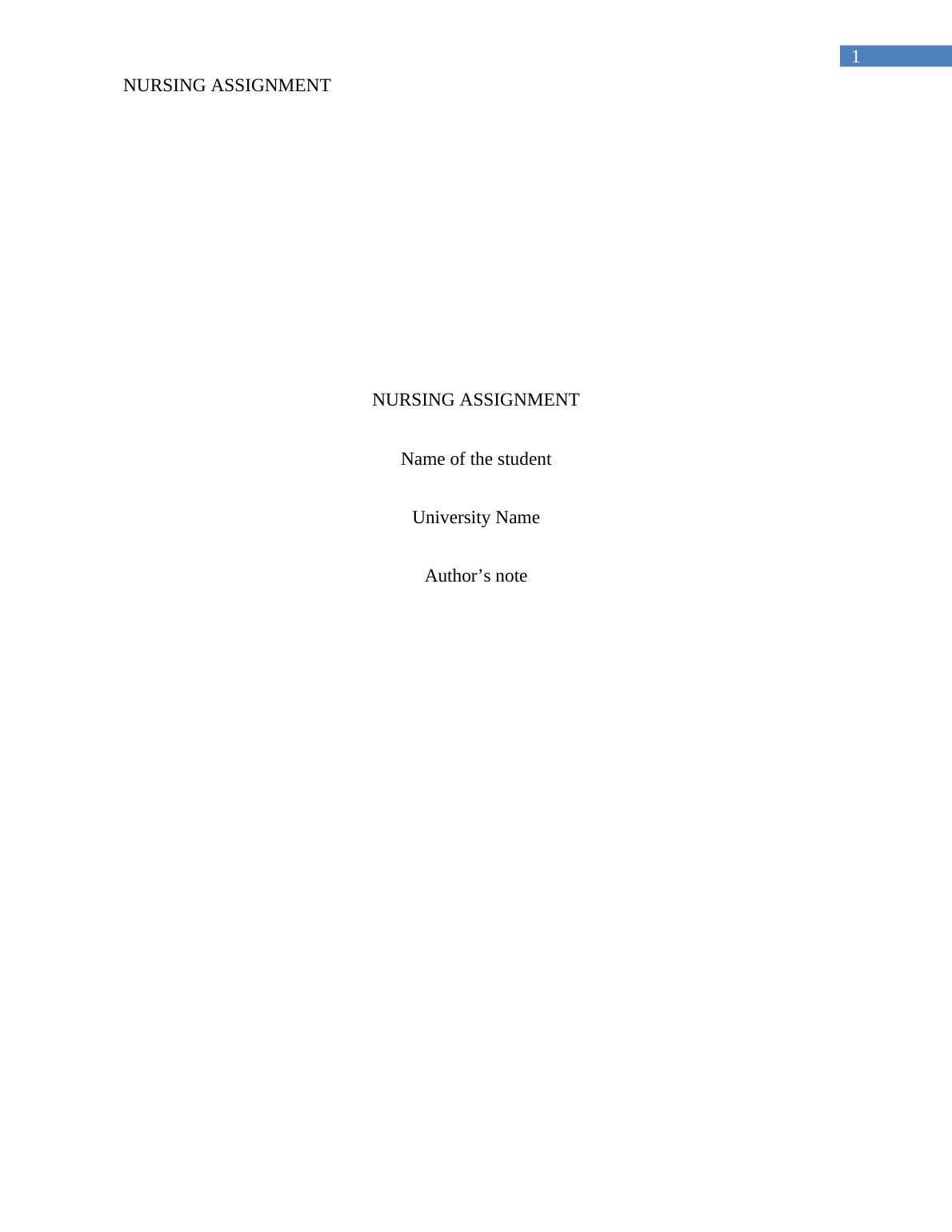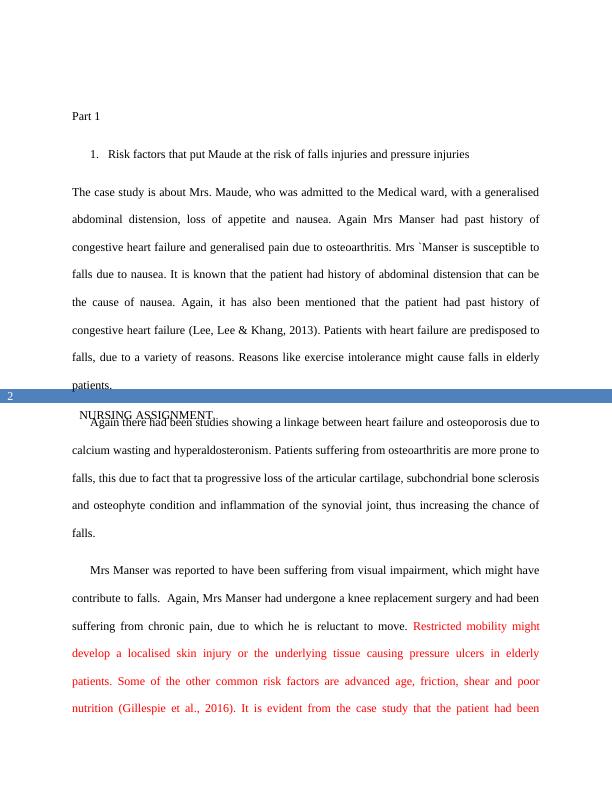Nursing Assignment: Risk Factors and Management for Falls and Pressure Injuries
7 Pages1860 Words46 Views
Added on 2022-12-26
About This Document
This nursing assignment discusses the risk factors that put Maude at risk of falls injuries and pressure injuries, as well as the nursing management plan for preventing falls and sustaining pressure injuries. It also provides information on promoting healthy bowel habits for Maude and her husband.
Nursing Assignment: Risk Factors and Management for Falls and Pressure Injuries
Added on 2022-12-26
ShareRelated Documents
End of preview
Want to access all the pages? Upload your documents or become a member.
Medical Emergencies for Out-of-Hospital Practice | Case Study
|13
|3462
|20
Evidence of Nursing Care Plan
|16
|5147
|12
Clinical Judgement and Decision-making in Nursing: A Case Study - Post Fall Patient Assessment
|6
|1085
|485
Understanding Acute Gastritis and Viral Gastroenteritis
|8
|2412
|114
Health Priorities - Nursing Case Study
|10
|2479
|281
NRSG370 - REFLECTION ON THE CASE STUDY ON M.S MELODY KING
|9
|2264
|43



